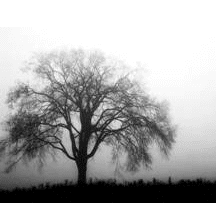Climate's Effect on a Straw Bale House
What are the Effects on a Straw Bale House You Need to Consider?
There’s no question that a local climate's effect on your home, whether it be a straw bale house or a home made of concrete block, is something you need to consider. In fact, the climate is often a driving force in people’s decision to build with bales. I’m sure you’ve heard people talk about how hot or cold their climate is and how if they only had a more efficient home, they could better stand the extremes. Unfortunately, some people decide to build a straw bale home before considering the potential effects their climate could have on a straw bale house until it's too late. It’s important to know what might happen to your home before you build it because there may be steps you can take to minimize those effects if you plan ahead!
Below are some of the effects that climate has on a bale home. Some of these may seem obvious, while others may not. I’m sure I’ve missed some, so feel free to add your own in the comments section.
Rain can saturate walls if they are not properly protected. You may have heard the saying “Big Hat and Big Boots” referring to a good roof overhang and a large raised foundation. These are two very good ideas if you live in an area with high rain totals.Also, consider adding a waterproof membrane above the bales, just below the bale stop or box beam. The challenge is avoiding punctures in this membrane during construction. Make sure it laps over the edge of the bales a couple of inches. Too little overlap and water can still make it down into the bales. Too much overlap, and your plaster will not adhere to the bales at the top of the wall.
Humidity, unlike rain, cannot be designed out of the equation with a hat and boots because it permeates everywhere and it can cause moisture to build up in the walls if not handled properly. The best approach to high humidity is two-fold. First, build with quality materials that can help remove excess moisture from your air/wall interface. Hygroscopic plaster, such as lime or earth, is a great idea as it will naturally help keep a constant moisture level in the wall. If there is excess moisture in the air, it will absorb it and hold onto it (until it reaches saturation, of course). Once the air dries out below the level of what the plaster is holding, the plaster will release the excess moisture back into the air.The second approach is a mechanical one. Install an Energy Recovery Ventilator (ERV) to help keep the air in your home fresh and to remove excess moisture. These are simple to install and work very well. They are also very energy efficient. Don’t rely solely on them as anything mechanical can fail (power loss, broken parts, etc.), so be sure to use them as part of the two-fold approach.
Cold weather can have all kinds of impacts. One that is often overlooked is the condensation of moisture in the walls. Because cold climates require us as humans to heat our indoor air space to stay warm, we create uneven climates from one side of a wall to the other that are quite drastic. If the warm and moisture-laden air from the inside of the house pushes into the center of a bale wall where everything is cold, the moisture can condense on the straw.The best way to win this battle is to not heat your home and live in the cold. Not a very likely option, I suppose, so another plan of attack is to make sure you seal any penetrations into the wall and seams between the wall and other surfaces. The most common areas are around electrical and plumbing installations and at the floor-to-wall and wall-to-ceiling transitions. Be sure to pay special attention to these areas, and you’ll be fine. Use foam gaskets at the electrical and plumbing installations and vapor tape and/or caulking at the wall-to-ceiling/floor transitions.
Hot climates pose their own set of issues. Of course, hot climates that are associated with high humidity must be approached in accordance with #2 above; however, dry climates have a different set of concerns. One that is often not considered is the life of the plaster. Natural plasters are not built with chemicals designed to help them resist cracking and, thus, must be installed carefully. Be sure to plaster the house when it is protected and ONLY then. Hang tarps from the eaves so that you can plaster in the shade and out of the wind. (Learn more about tarping for plastering a straw bale structure.) These two aspects of a hot and dry climate can ruin a plaster job. Remember that your plaster is not only the “look” of your straw bale house but also its protection. If it is compromised, so too is the substrate, in this case, your bales.
Like I said at the beginning of the post, this list is in no way complete. There are many other climates that should and will be considered and many other effects of each of those climates. This is a list to do one thing: get you thinking. I hope it does just that. As always, I welcome your comments and input.
-Andrew Morrison

